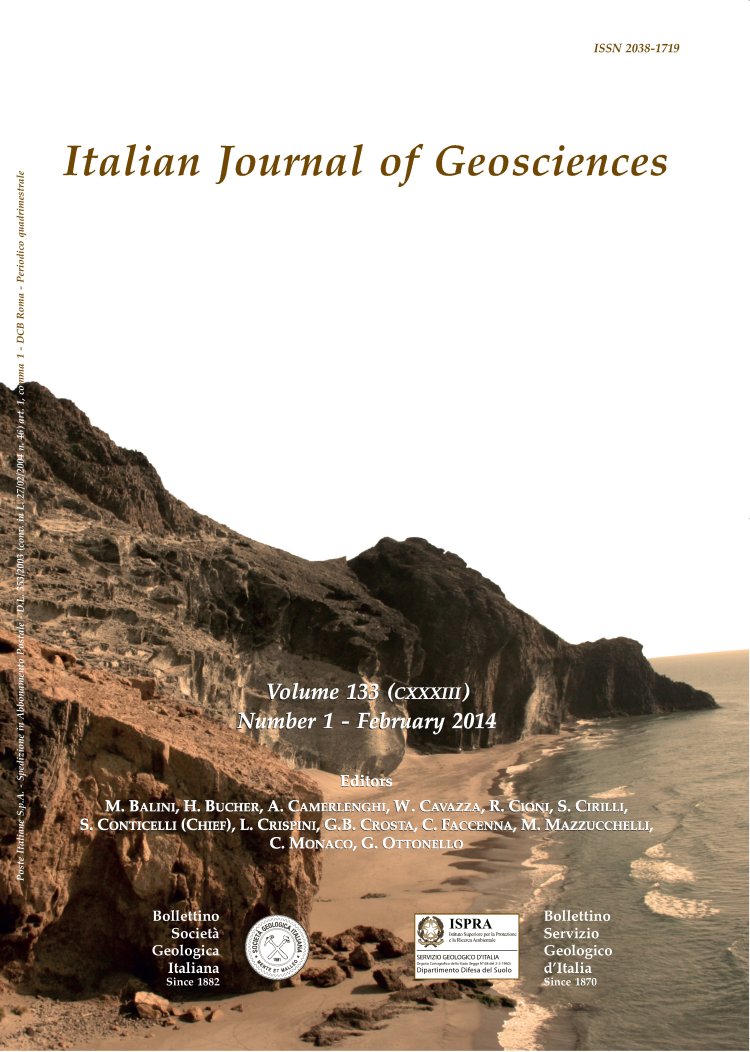
Pliocene to Quaternary evolution of the Ofanto Basin in southern Italy: an approach based on the unconformity-bounded stratigraphic units
Paolo Giannandrea(*), Maria Marino(**), Maria Romeo(***) & Marcello Schiattarella(*)
(*) Dipartimento di Scienze, Università della Basilicata, Campus Macchia Romana, Potenza, Italy. Corresponding author: Paolo Giannandrea; cell.: 338 5906841; fax: 0971 205503; e-mail: paolo.giannandrea@unibas.it
(**) Dipartimento di Scienze della Terra e Geoambientali, Università di Bari Aldo Moro, Via Orabona, 4 - Bari, Italy.
(***) Dipartimento di Scienze Biologiche, Geologiche e Ambientali, Università di Catania, Via A. Longo, 19 - Catania, Italy.
DOI: https://doi.org/10.3301/IJG.2013.11
Volume: 133 (2014) f.1
Pages: 27-44
Abstract
The Ofanto Basin is an actively evolving intra-chain basin of the Southern Apennines, Italy. It has an elongated shape, about 7 km large and 45 km long, and is E-W striking, representing a marked bend in the NW-SE regular orientation of the south-Apennines morphostructures.
The basin is filled up by Pliocene to Quaternary clay, sandstone, and conglomerate, deposited in both marine and continental environments. The main sedimentary deposits are grouped into six units bounded by stratigraphic discontinuities marked by unconformities and abrupt lithological variations. Three of those discontinuities are recognisable on a regional scale and represent the physical boundaries of three supersynthems, in turn subdivided into synthems and subsynthems by basin-scale unconformities. The sedimentary evolution of the basin is herewith reported. Facies analyses and architecture of the sedimentary bodies revealed that each unit formed different alluvial and deltaic depositional systems located on the southern and northern margins of the basin. The morphology of the northern slope was probably steeper than the southern one. The oldest units were deposited in the Western sector of the Ofanto basin. Starting from the late Zanclean to the early Gelasian, the sedimentary bodies underwent an Eastward shift in their deposition, suggesting a basinward relocation of the depositional systems. Such variations in time and space seem to reflect relevant changes in accommodation space and sedimentary supply during the tectonic evolution of the basin. Eventually, correlations among adjacent basins and the meaning of the discontinuities as former erosional surfaces have been pointed out.
Keywords
Get Full Text Attached